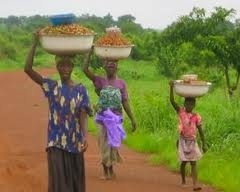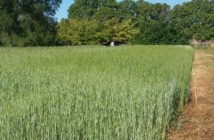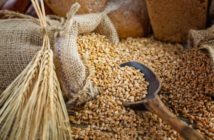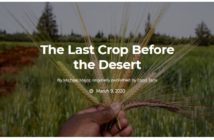Africa.com Blog

by Makhosazana Sika, South Africa-Washington International Program (SAWIP)
Nkosazana Dlamini-Zuma, the incumbent chairperson of the Africa Union (AU) Commission, recently lauded Africa’s promising possibilities. She stated that the continent has great prospectives in terms of agricultural, energy, and human resources potential. Focusing on agriculture, Africa has great potential in developing its agricultural sector.
In recent years, a number of African countries have shown improvements in the role of the agricultural sector towards economic growth. Strategies followed by Morocco and Ethiopia are fundamental examples. Morocco shifted focus from primarily supporting staple (cereal) crops to investing in high-value crops (such as citrus fruit and tomatoes) targeted at improving GDP growth, while simultaneously improving smallholder farmers’ incomes. Today, Ethiopia is a fast-growing exporter of oilseeds and cut flowers largely due to the strong collaborations forged between government and the private sector. These two examples are exemplary to the potential of agriculture in significantly contributing towards economic growth for a nation and smallholder farmers.
In contrast, the famine and drought in Somalia that killed approximately 30 000 children (under the age of 5) in three months in 2011 is a deplorable example of agricultural failure that should not be re-lived. It is imperative that government agricultural ministries fulfil their long-term commitments as stipulated in their policies. In this manner, these ministries enable effective implementation of their country development and investment plans.
African Union Heads of State and Government decided on the Maputo Declaration on Agriculture and Food Security in Africa in July 2003. While several key decisions regarding agricultural development were highlighted, the call to AU countries to allocate a minimum of 10 percent of their national budget resources within five years towards the realization of agriculture and rural development was most prominent. To date, only seven countries have met this criterion, viz. Burkina Faso, Ethiopia, Guinea, Malawi, Mali, Niger, and Senegal; while other countries continue to make considerable progress towards this goal. Also in July 2003, the New Partnership for Africa’s Development(NEPAD) established the Comprehensive Africa Agriculture Development Programme (CAADP) primarily focused on increasing agricultural productivity across Africa by a minimum of 6 percent. The mandate of CAADP was developed as a Compact aimed at achieving CAADP’s strategic functions, local and economic communities, national roundtable and four principal pillars. The pillars of CAADP comprise:
land and water management
improving market access for agricultural products
increasing food supply and reducing hunger, and
capacity building through agricultural research.
Rwanda was the first country to sign the CAADP Compact. By May 2011, the number of countries that had signed and integrated the objectives of the CAADP Compact into building their agricultural sector had increased to 26 countries. As of October 2011, South African was expected to sign the CAADP Compact by mid-2012.
In building on the potential of expanding on human resources in the agricultural sector, a number of support structures should be put in place for farmers, with particular focus on smallholder farmers. Support of smallholder farmers should be aimed at ensuring land sustainability as well as food and nutrition security. While there are a number of possible focus areas, of concern are: the on-going training and skills development regarding the transition towards modern (and mechanized) agricultural production, government and private sector investments in irrigation infrastructure. Furthermore, access to micro-finance and securing sustainable commercial markets that promote access to wholesalers and retailers are support structures can mean the difference between success and poverty for smallholder farmers. The provision of extension and advisory services are also important and should include the promotion of educating farmers on modern technologies that they may benefit from.
As we grow towards building food and nutrition secure African nations, we need to ensure that we effectively implement policies such as the Maputo Declaration on Agriculture and Food Security, and the CAADP Compact in overcoming extreme hunger and poverty across the continent. There are numerous success stories that we can draw inspiration from, we now need to realize the great agricultural potential in our African natural and human resources.
Makhosazana Sika is a PhD candidate in Soil Science at Stellenbosch University and a student of the South Africa-Washington International Program. Her interests include geocaching, running and food security and she hopes to make a significant contribution in the agricultural and food production systems in South Africa. This summer, she interned at the International Finance Corporation.
The South Africa-Washington International Program (SAWIP) is a six-month leadership, service and professional development program that recruits 15 high-potential South African students from three top South African universities each year in pursuit of its mission to inspire, develop and support a diverse new generation of emerging South African leaders from multiple disciplines.
Visit www.sawip.org or follow @SAWIPlive for more information. For program or donor queries, please e-mailsawip-us@sawip.org.
.






